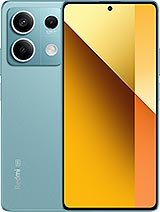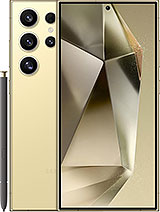The Xiaomi Redmi Note 13 Pro+ launched late last year, so it’s no youngster anymore, but it’s still a competitive offering – especially with the latest discounts. The phone packs a 200MP main camera (Samsung HP3 sensor) which does an impressive job during both day and night, with a killer 2x in-sensor zoom and decent results at 4x. The phone has a bright, premium display, a Dimensity 7200 chipset, and a 5,000mAh battery with 120W fast charging.
For €40-50 less, you can get the Redmi Note 13 Pro. It’s very similar, but with a flat display, a Snapdragon 7s Gen 2 chipset, and UFS 2.2 storage (vs. UFS 3.1). It also has a 5,100mAh battery with 67W charging. Check it out our versus article for a detailed comparison of the two.
Even cheaper is the Redmi Note 13 (5G). It has the Dimensity 6080 and a 108MP main camera. The screen has a resolution of 1080p+ instead of 1220p+ and charging the 5,000mAh battery has been reduced to 33W. Note: the upgrade to 8GB RAM and 256GB storage costs only €20.
Instead of the Pro+, you can get the OnePlus Nord 3, which focuses on more processing power (Dimensity 9000) over camera prowess (the 50MP 1/1.56” main camera is nice, but no match for the Redmi Note). It has a big, high-quality display, a 6.74” 1240p+ OLED, and a 5,000mAh battery with 80W charging.
Instead of the vanilla Redmi Note 13, you should consider the Poco X6 . It has a better screen – a 1220p+ 12-bit panel with Dolby Vision and up to 1,800 nits of brightness – and a Snapdragon 7s Gen 2 chipset. Also, its 5,100mAh battery is faster with 67W charging. Its 64MP main camera is pretty basic, however.
The Xiaomi 14 is from the company’s premium brand. It features a 6.36-inch LTPO OLED display, making it smaller than most Androids, and a Snapdragon 8 Gen 3. Its triple 50MP camera setup includes a 75mm (3.2x) telephoto lens, and its 4,610mAh battery supports fast wired (90W) and wireless (50W) charging.
Right now, the Xiaomi 14 and Samsung Galaxy S24 are essentially the same price. The S24 is smaller (around 6mm shorter, 1mm narrower and 0.6mm thinner) and lighter (167g vs. 188g), and its 6.2” OLED screen is finally an LTPO panel (1080p+ resolution). Europe got the Exynos 2400 version this year, still with only 8GB of RAM. And its 10MP 67mm (3x) telephoto lens is no match for the Xiaomi, nor is its 12MP ultra-wide lens. There’s not much to see in the battery department either, with a 4,000mAh capacity and 25W wired and 15W wireless charging.
The Asus Zenfone 10 is cheaper than these two, but it’s also older – it’s a Snapdragon 8 Gen 2 device. It’s still Asus’ latest small flagship, as the Zenfone 11 Ultra never got a small companion. Its 5.92-inch 144Hz display is smaller than the Samsung’s, and the phone itself is only marginally smaller. It has a 4,300mAh battery with 30W wired and 15W wireless charging. The Zenfone has a 3.5mm headphone jack, but no microSD slot.
The Xiaomi 14 Ultra is one of the best camera phones of 2024. It has a quad 50MP camera, but with a 1-inch sensor in the main body (versus 1/1.31” for the vanilla Xiaomi 14), plus the 75mm telephoto module is joined by a 120mm periscope. This is a big phone, with a 6.73-inch QHD+ display and a 5,000mAh battery with 90W wired and 80W wireless charging.
It competes with the Samsung Galaxy S24 Ultra in very similar price ranges. The S24 Ultra has a 6.8-inch QHD+ display with an S Pen. Its quad camera setup includes a 200MP 1/1.3-inch main, 10MP 67mm and 50MP 111mm telephoto, and 12MP ultra-wide modules. The 5,000mAh battery does only 45W wired and 15W wireless charging.
We may earn a commission on qualifying sales.









